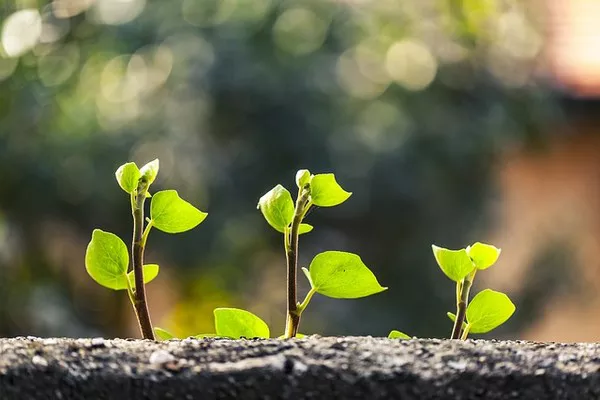Plant propagation is an essential skill for both amateur and experienced gardeners. It allows you to multiply your favorite plants, share them with friends and family, or simply save money on purchasing new ones. One of the most popular methods of plant propagation is using cuttings. In this comprehensive guide, we will explore the art and science of rooting plants from cuttings, providing you with the knowledge and techniques needed for successful propagation.
Why Use Cuttings?
Before delving into the how-to of rooting plants from cuttings, it’s important to understand why this method is preferred by many gardeners. Here are some key reasons:
Genetic Continuity: Propagating plants from cuttings allows you to create new plants that are genetically identical to the parent plant, ensuring desirable traits are preserved.
Faster Growth: Cuttings generally grow faster than plants grown from seeds because they skip the germination phase.
Replicate Favorites: You can reproduce your favorite plants, including rare or hard-to-find varieties, without relying on seeds or purchasing new plants.
Time Efficiency: Many plants can be propagated year-round, making it a convenient method for continuous gardening.
Learning Opportunity: Rooting cuttings provides valuable hands-on experience and deepens your understanding of plant biology.
Selecting the Right Plants
Not all plants are suitable for propagation via cuttings. To increase your chances of success, it’s crucial to choose the right plants. Here are some considerations:
Non-Woody vs. Woody Plants:
Non-woody plants, such as herbs and most annuals, are generally easier to propagate from cuttings.
Woody plants, like trees and shrubs, can also be propagated but often require more time and effort.
Health and Vigor: Select healthy, disease-free plants as your source material. Weak or stressed plants may not yield successful cuttings.
Seasonal Timing: Timing is critical. Softwood cuttings are taken in spring when new growth is tender, while hardwood cuttings are taken in late winter or early spring when the plant is dormant.
Materials and Tools
Before you start taking cuttings, gather the necessary materials and tools:
Pruning Shears or Scissors: Use sharp, clean cutting tools to ensure clean cuts that minimize damage to the plant.
Rooting Medium: You’ll need a suitable growing medium for the cuttings, such as potting soil, perlite, or vermiculite.
Containers: Small pots, trays, or propagation cells are ideal for holding the cuttings.
Rooting Hormone: A rooting hormone powder or gel helps stimulate root development and can increase success rates.
Plastic Bags or Domes: These help create a humid environment for the cuttings, promoting root growth.
Taking Cuttings
The process of taking cuttings can vary depending on the type of plant you’re propagating. Here, we’ll cover the basics for both softwood and hardwood cuttings:
Softwood Cuttings:
Select a healthy, young stem with no flowers or buds. The stem should be flexible and easily snapped when bent.
Use sharp shears or scissors to cut a 3-6 inch (7.6-15 cm) section of the stem just below a leaf node.
Remove any leaves from the lower half of the cutting, leaving a few leaves at the top.
Dip the cut end of the cutting into rooting hormone to encourage root development.
Hardwood Cuttings:
Choose a mature, woody stem that’s at least the thickness of a pencil.
Cut the stem into 6-8 inch (15-20 cm) sections, making each cut just below a bud.
Remove any leaves from the lower half of the cutting, leaving a few buds at the top.
Dip the cut end of the cutting into rooting hormone.
Rooting the Cuttings
Once you have prepared your cuttings, it’s time to root them. Here’s a step-by-step guide:
Prepare the Containers: Fill your chosen containers with the rooting medium, leaving about an inch (2.5 cm) of space at the top.
Plant the Cuttings: Insert the cut end of each cutting into the rooting medium, making sure to bury at least one leaf node.
Watering: Water the cuttings thoroughly, ensuring the rooting medium is evenly moist but not waterlogged.
Humidity: To maintain a humid environment, cover the containers with plastic bags or domes. This helps prevent moisture loss and encourages root development. Make sure the covering doesn’t touch the cuttings.
Light and Temperature: Place the containers in a location with bright, indirect light. Maintain a temperature between 70-75°F (21-24°C) for optimal rooting.
Check and Maintain: Regularly check the cuttings for signs of wilting, and water as needed to keep the rooting medium consistently moist but not soggy.
Transplanting: Once the cuttings have developed a healthy root system, typically in a few weeks to several months depending on the plant type, they can be transplanted into larger pots or directly into the garden.
Conclusion
Rooting plants from cuttings is a rewarding and cost-effective way to expand your garden. By carefully selecting the right plants, using proper techniques, and providing the ideal environment, you can increase your chances of success in propagating a wide range of plant species. Whether you’re a beginner or an experienced gardener, mastering the art of plant propagation from cuttings is a valuable skill that can enhance your gardening journey and yield beautiful, healthy plants for years to come.


